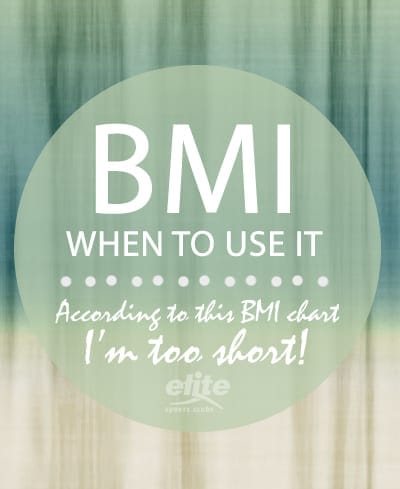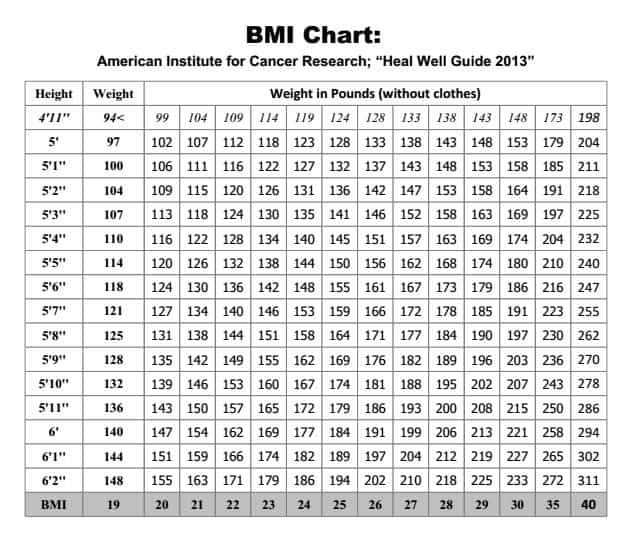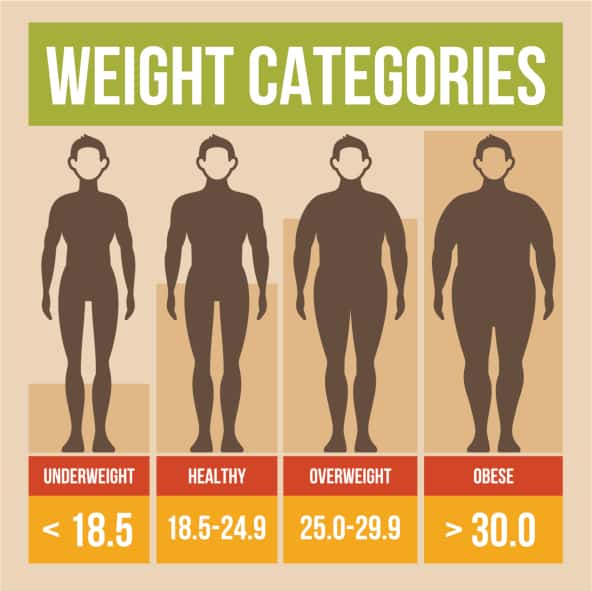
There’s a bit of controversy surrounding body mass index measures and how they should (or shouldn’t) be used when determining healthy body measurements for an individual. When it comes to me and my clients, here’s what I suggest.
It is necessary to at least measure ourselves against other individuals using the Body Mass Index—or height to weight—as a measure of health, rather than purely a weight control measure. In addition, individuals who use these measures have a better chance to live within healthy guidelines and to not run the risk of becoming unhealthy solely due to increasing body weight.
Many diseases are related to body weight increases; such as, arthritis, heart disease, high blood pressure, and diabetes. With increased body weight everything tends to go up. (Read more about how a healthy body weight and diet can prevent disease.)
BMI may not be an accurate measure for everyone—including people who have more muscle mass (like athletes), older adults with less muscle mass, or people under 5 feet tall.
To use the table above, find your height in the left-hand column. Locate your weight (in pounds) to the right. The number at the bottom of that weight column is the BMI for your height and weight.
Body Mass Index (BMI)
Body Mass Index is a way to measure overweight and obesity. BMI is a measure of body fat based on a person’s weight and height. Staying within the healthy range throughout life is important for lowering health risks.
There are five BMI categories:
- Underweight: Below 18.5
- Healthy Weight: 18.5 to 24.9
- Overweight: 25.0 to 29.9
- Obese: 30.0 to 39.9
- Extremely Obese: 40.0 and above
Waist Circumference
Waist circumference is another method of assessing body weight and is particularly sensitive to accumulation of visceral fat. Use a measuring tape and follow these easy steps:
- Place a tape measure around the waist above the tip of the hipbone.
- Measure the waist after exhaling.
- Use the following measurements to determine health risk.
- For women, a waist measurement of 31.5 inches or more indicates increased health risk.
- For men, a waist measurement of 37 inches or more indicates increased health risk.
If you are still confused about the best way to use these types of measurements to help determine your overall health, please see a certified fitness or nutrition professional. They can not only help you get more accurate measurements, but also decipher their meaning and then help you create a plan of action to work towards improvements.
Set up a Free Fitness ConsultationBy Rita Larsen, RD, CD; Elite Sports Clubs Nutrition Educator & Diet Counselor

